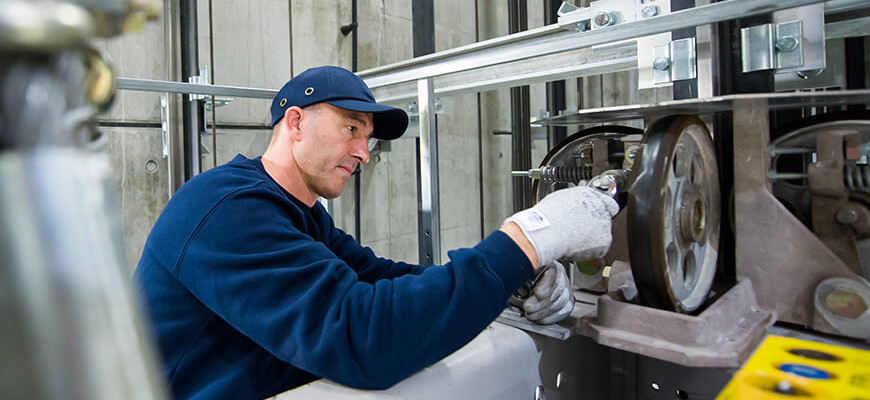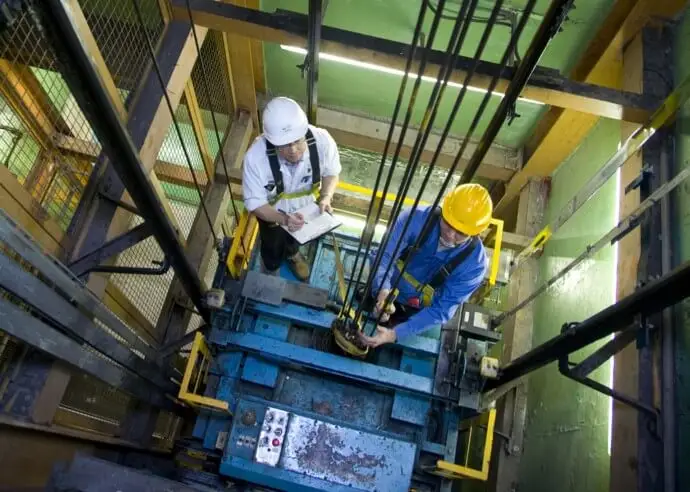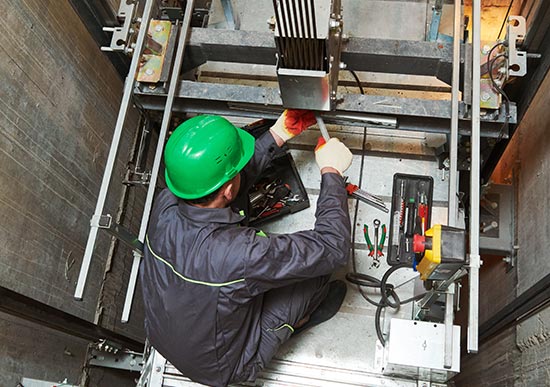Budget Friendly Lift Servicing Options for Residential and Commercial Usage
Budget Friendly Lift Servicing Options for Residential and Commercial Usage
Blog Article
In-Depth Lift Service Plan Incorporating Troubleshooting, Change, and Calibration
In the realm of vertical transportation systems, elevators play a vital duty in making certain efficient activity within structures. A thorough elevator solution prepare that incorporates adjustment, calibration, and troubleshooting is not just a regular upkeep timetable; it is a comprehensive approach to elevating the performance and security standards of these indispensable devices.

Significance of Lift Upkeep
Lift maintenance is a critical element of making certain the safe and efficient procedure of a structure's upright transportation system. Routine maintenance not only extends the life expectancy of the lift but also decreases the threat of unforeseen malfunctions, making sure the security of residents. By sticking to an organized maintenance plan, building owners and center managers can recognize and resolve possible concerns prior to they rise right into significant problems, therefore decreasing downtime and pricey repair work.
Routine upkeep jobs include inspecting and lubing moving parts, screening safety and security functions, and adjusting mechanisms to keep ideal efficiency. In addition, normal upkeep aids to guarantee that the lift complies with safety policies and requirements set by pertinent authorities. Overlooking upkeep can lead to breakdowns, such as abrupt stops in between floors, door concerns, or electrical failings, every one of which can trouble individuals and jeopardize their security.
Troubleshooting Techniques for Elevators
Guaranteeing the safe and effective procedure of a building's upright transportation system with regular maintenance additionally involves the application of reliable troubleshooting methods for addressing prospective lift issues immediately. Troubleshooting methods for lifts are essential to keeping a trusted lift solution.
One more crucial troubleshooting method is performing a thorough physical examination of the lift elements. This involves checking for any kind of indicators of wear and tear, loose connections, or unusual noises throughout procedure. By visually examining the lift equipment and electric systems, technicians can determine prospective problems prior to they rise right into major problems.
Additionally, fixing methods for lifts usually involve testing various safety functions, such as emergency brakes and door sensors, to ensure they are working properly. Consistently testing these safety mechanisms can help avoid accidents and guarantee passenger safety. By incorporating these troubleshooting strategies right into a lift service plan, building proprietors can decrease downtime, lower repair service expenses, and ensure a smooth vertical transportation experience for owners.
Precision Adjustments in Lift Service
Implementing exact adjustments is extremely important in preserving the optimum functionality and efficiency of elevator systems within a structure. elevator repair. Lifts are complex mechanical systems that need meticulous fine-tuning to make sure reliable and smooth procedure. Precision changes play an essential function in boosting safety, minimizing downtime, and prolonging the life expectancy of lift components
When conducting accuracy changes in elevator service, service technicians must possess a deep understanding of the system's technicians and dynamics. Little deviations in rate, progressing, or placement can lead to considerable concerns otherwise addressed quickly. By very carefully adjusting criteria such as door closing times, leveling accuracy, and acceleration prices, technicians can optimize the overall performance of the elevator.
Additionally, accuracy changes aid protect against early damage on essential components, such as cable televisions, sheaves, and control systems. On a regular basis set up upkeep that includes fine-tuning modifications can minimize the risk of unanticipated malfunctions and costly repair services. Elevator company need to focus on accuracy changes as component of their detailed maintenance plans to promote the highest possible requirements of integrity and traveler safety.
The Importance of Calibration Processes

Calibration procedures also play a crucial duty in prolonging the life expectancy of lift equipment. Routine calibration aids identify prospective concerns at an early stage, permitting for timely adjustments or substitutes before significant problems develop. This aggressive approach not only stops pricey downtime but likewise contributes to the total reliability of the elevator system.
In addition, calibration is crucial for making sure compliance with sector regulations and standards. By complying with supplier referrals and industry best practices throughout calibration treatments, elevator company can guarantee that the system meets all essential safety and security demands. Properly adjusted lifts not just enhance user experience yet additionally show a dedication to passenger safety and building code compliance.
Enhancing Elevator Performance and Long Life
To enhance elevator efficiency and extend its long life, a detailed maintenance timetable is crucial. Regular upkeep not only makes certain that the elevator runs effectively yet also helps in recognizing potential concerns before they intensify, thereby minimizing downtime and costly repair services.
Furthermore, applying advice modern technologies like IoT sensing units and predictive upkeep software can offer real-time information on elevator performance, making it possible for predictive maintenance organizing and minimizing unforeseen failures. Upgrading older elevator systems with energy-efficient elements can additionally contribute to enhanced efficiency and reduced energy usage, bring about cost savings in the future. By focusing on regular maintenance, embracing brand-new modern technologies, and considering system upgrades, building proprietors can dramatically enhance elevator performance and extend its life expectancy, making certain smooth operations for residents and visitors alike.

Conclusion
By carrying out repairing techniques, precision changes, and calibration procedures, elevator solution suppliers can improve the overall capability of elevators. Spending in a thorough elevator service plan is essential for making the most of the life-span of lifts and guaranteeing smooth transport for constructing occupants.
Repairing techniques for lifts are vital to maintaining a reliable lift solution.Additionally, implementing modern-day technologies like IoT sensing units and predictive maintenance software can supply real-time information on elevator efficiency, enabling anticipating maintenance scheduling and decreasing unexpected failures (lift engineers near me). By focusing on routine upkeep, adopting new modern technologies, and considering system upgrades, building proprietors can significantly improve lift efficiency and prolong its life expectancy, making certain smooth operations for passengers and site visitors alike
By carrying out repairing techniques, precision modifications, and calibration procedures, elevator service companies can improve the total capability of elevators. Investing in an extensive lift solution strategy is essential for taking full advantage of the life-span of lifts and making certain smooth transportation for building residents.
Report this page